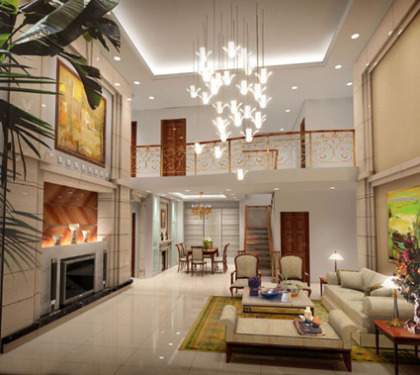 With the development of the Internet of Things, triple play, and the development of the Internet, the society has stepped into the "Information Age." At the same time, smart lighting has also begun to enter people's field of vision, and its humanized setting of the scene has been respected by people. In the face of this development opportunity, domestic smart lighting manufacturers and merchants have mushroomed rapidly and emerged as dozens of companies such as Ruilang, 100% lighting, Tsinghua Tongfang, Sobo, Haier and Ruixun. Smart lighting has entered a new stage of development.
With the development of the Internet of Things, triple play, and the development of the Internet, the society has stepped into the "Information Age." At the same time, smart lighting has also begun to enter people's field of vision, and its humanized setting of the scene has been respected by people. In the face of this development opportunity, domestic smart lighting manufacturers and merchants have mushroomed rapidly and emerged as dozens of companies such as Ruilang, 100% lighting, Tsinghua Tongfang, Sobo, Haier and Ruixun. Smart lighting has entered a new stage of development. When the domestic enterprises suddenly rise, the lighting status of the domestic market is somewhat disappointing. It is understood that the domestic smart lighting industry is a mixed bag, not only the larger foreign companies that specialize in providing intelligent lighting products, but also relatively small intelligent lighting manufacturers. This caused a mixed development. At the same time, the overall market size of the smart lighting industry is still not very large, generally used in hotels and conference halls, and there are still relatively few smart lighting products used in ordinary office buildings. So in the end what has affected the development of smart lighting?
Inadequate promotion has become a bottleneck that hinders the development of the intelligent lighting industry. All along, foreign related products often only operate smart lighting as a subsystem of their intelligent products, positioning high-end, creating a high-profile situation, which is similar to the last century. The 90s home appliance market. In China, intelligent lighting as a new type of industry has great obstacles in consumer awareness and promotion. To a certain extent, the promotion of smart lighting is similar to the promotion of smart homes, but smart lighting, as part of smart home control, may be promoted more easily than the promotion of smart homes.
At present, the promotion of domestic smart lighting products is far from enough. Because this is an emerging industry, unlike fast-moving consumer goods, the construction of channels and the formation of consumer attitudes, etc. are all rivers and rivers, so they do not dare to invest too much energy and resources. As the market has not yet formed, there has not yet been a large consumer market. Most smart lighting manufacturers are still trying to guide consumers and have been exploring patterns suitable for this industry in the construction of channels. Because the traditional lighting, electrician dealers are difficult to promote the reasons for all aspects, the company is not professional enough decorative, security monitoring companies from the real estate and other factors far away from the smart lighting market has not yet formed a stable, broad channels.
In the era of energy conservation, intelligent lighting ushered in the opportunity for development. Although the development of intelligent lighting is not as smooth as we think, with the economic development and technological progress, as well as the impact of energy conservation and environmental protection trends, smart lighting will usher in a good opportunity for development. It is understood that building energy consumption occupies a considerable proportion in the global economy. The proportion of high-power power and refrigeration equipment in commercial buildings is relatively low, and the relative proportion of lighting fixtures is more. Therefore, lighting energy consumption ranks first. Here, major companies and their constructors are also aware of the importance of smart lighting. The use of lighting control systems can better reflect its advantages in energy saving and management and improve the scientific management of schools.
However, smart lighting still has a big difference from building automation. Buildings that use central air conditioning generally use building automation systems, but houses with lighting do not necessarily require smart lighting products. The main function of the intelligent lighting system is to facilitate management and energy saving. Energy saving is reflected in the integrated power metering function of the switch. Such a measurement method can provide a basis for energy conservation. Now more energy-efficient monitoring, including the renovation of old buildings, and new buildings, are more advocated for measuring electricity. However, the size of the meter is relatively large. If you want to know the power consumption, you need a lot of space to install the meter. Integrating the power metering function in the module can solve this space problem well.
The future development of smart lighting is closely related to the need for convenient management and energy conservation. With the rising cost of labor, the demand for intelligent and remote control will increase. The increase in demand for energy conservation will also bring corresponding growth to the smart lighting industry in the future. The demand for gymnasiums, stations, exhibition halls, and hotel renovation will be the new growth point for smart lighting.
Conclusion:
In the information age, with the development of network technology and communication technology, advancement of energy conservation and environmental protection policies, and development of digital home concepts, smart lighting as an important component of smart homes is bound to be valued by various intelligent manufacturers. It can be seen that the prospects for smart lighting are bright, but there are still obstacles to channel promotion in the future development. This is a problem that all manufacturers have to consider.